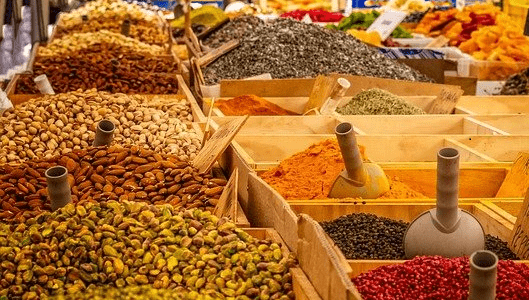Mega Food Park Scheme
Context:
Recently, the Union Minister for Food Processing Industries virtually inaugurated the Indus Best Mega Food Park at Raipur, Chhattisgarh.

About:
- Mega Food Parks Scheme launched by the government in 2008.
- It provides financial assistance up to 50 crores to set up modern infrastructure facilities for food processing called Mega Food Parks.
- It establishes a mechanism to bring together farmers, processors and retailers and link agriculture production to the market to ensure maximization of value addition, minimization of wastage and improving farmers’ income.
- This article briefly covers the objectives, the way it functions by establishing infrastructures like CPC, PCC, CC; and the locations of 22 Mega Food Parks in India.
Mega Food Parks – Objectives & Infrastructure
- The primary objective of the Scheme is to provide modern infrastructure facilities for the food processing along the value chain from the farm to the market with a cluster-based approach based on a hub and spokesmodel.
- It includes the creation of infrastructure for primary processing and storage near the farm in the form of Primary Processing Centres (PPCs) and Collection Centres (CCs) and common facilities and enabling infrastructure like roads, electricity, water, ETP facilities etc. at Central Processing Centre (CPC).
- These PPCs and CCs act as aggregation and storage points to feed raw material to the food processing units located in the CPC.
How will it impact our society?
- Economic Impact: Cost reduction of final processed food, employment creation, better sales figure of farmers, Infrastructure development.
- Social Impact: Rising farm income will lead to less suicidal tendency and incidents among farmers; rise in income level of rural India will help in better health and education opportunities especially for women and children.
Make in India: Food Processing Industries will give impetus and fuel to this project. - Ease of Doing Business: Availability of raw material will increase and faster delivery of goods will lead to better business opportunities.
- Food Security: Waste Management and Reduction will improve net food items in the country which can be utilized under NFSA (National Food Security Act) and therefore minimization of imports will take place.
- Environmental: Better and efficient supply chain models will lead to less trucks/vehicles on the road therefore less pollution and ultimately helping India in achieve its INDC (Intended Nationally Determined Contribution) under Paris Climate agreement.
- Rural Development: Since the model is supposed to work near collection centres therefore rural areas will experience industrial development along with agricultural and horticultural development.
Conclusion
Mega Food Park scheme is very promising for rural development and integration of rural and urban India through various supply chain linkages. However, the working of the scheme in the last decade paint a different story due to cost overrun, delayed projects and litigated projects. Since land is a state subject therefore success of such scheme is possible only if there is acooperative federalism and land issues are resolved outside of the court.
Central Processing Centre (CPC)
- CPC is an industrial park in a large area and houses a number of processing units owned by different business houses.
- The park shall provide common facilities such as electricity, water and effluent treatment besides specialised services such as warehousing, cold storage, logistics and backward integration through the network of Primary Processing Centres (PPC) and Collection Centres (CC).
Primary Collection Centres (PCC)
- The PCCs work as primary handling centres which use the raw materials to be processed further in the CPC.
- A PCC serves a number of CCs in the proximity.
- they provide primary processing facilities such as weighing, sorting, grading, washing, crating and storage of the produce.
Collection Centres (CC)
- The CCs work as a point of aggregation of the produce from individual farmers, farmer groups and Self Help Groups (SHGs).
- They feed the raw materials to PCCs.
- They are mostly managed by local entrepreneurs. They serve as farm-level aggregation points for adjoining areas.



